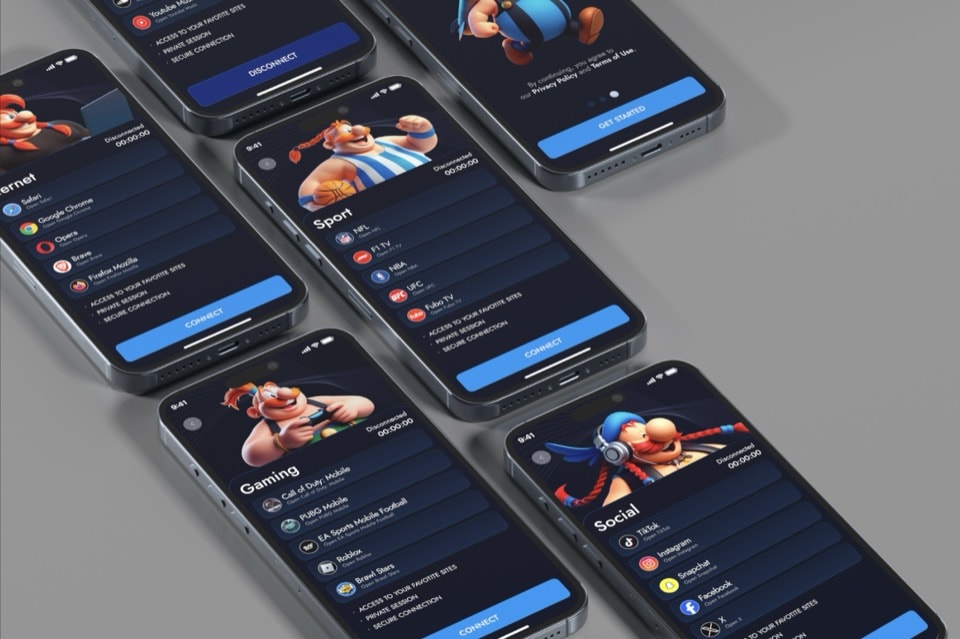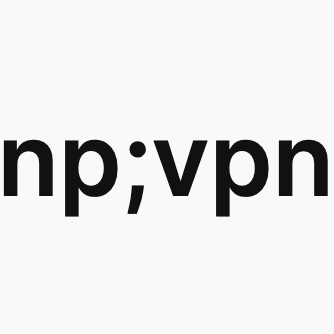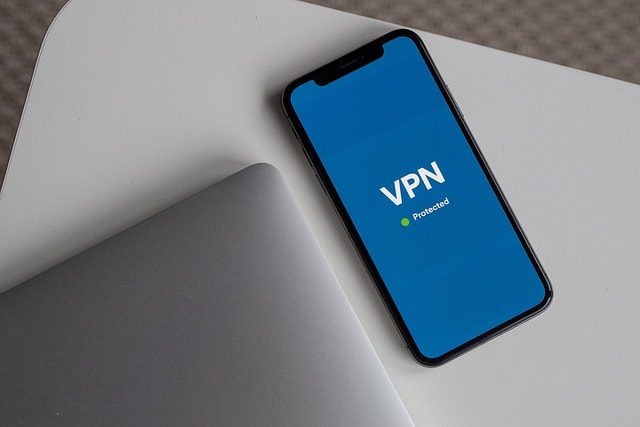Want to create a VPN app for iOS? With privacy and security becoming more important than ever, VPN apps are in demand. Developing a VPN app for iOS isn’t as hard as it seems. This guide will take you through the step-by-step process, covering everything from design to coding to backend setup.
Why Create a Custom VPN App for iOS?
While iOS offers a built-in VPN, it has its limits. A custom VPN app provides better control, more features, and improved user experience. With a personal VPN app, you can offer unique features like Always-On VPN, Kill Switch, and multi-protocol support, making it more appealing to users.
Planning Your iOS VPN App
Before you start coding, plan your VPN app carefully. Consider these features:
- Minimum required features like Connect/Disconnect what else required just for starting
- Server side components
- Teammates with required technical skills
Start with an MVP (Minimum Viable Product) to test your business cycle. It should include basic VPN connection and server integration, making it faster to launch and gather user feedback.
UI/UX Design for iOS VPN Apps
Design is crucial for iOS apps. Apple is known for its strict design guidelines, so make sure your app meets its standards. Here’s how to ensure a great UI/UX:
- Use Figma for designing and prototyping the app interface.
- Keep it simple with one-tap connection and easy navigation.
- Include a clear status indicator, so users know when they’re connected to the VPN.
Follow Apple’s Human Interface Guidelines to make sure your app looks good and works well on iPhones and iPads. This will also make it easier to get your app approved on the App Store.
Choosing the Right Tech Stack
Native iOS Development with Swift
Swift is the main language for building VPN apps for iOS. It’s fast, secure, and works well with Apple’s Network Extension framework, which you’ll need to set up personal VPN connections. This ensures that users have a secure internet connection throughout their sessions.
Benefits of Swift:
- Better performance
- Deep system integration
- Access to iOS-specific features
Cross-Platform Development: Flutter and React Native
If you want a codebase that works on both iOS and Android, consider using Flutter or React Native. These frameworks allow you to create VPN apps that can run on multiple platforms, saving time and money. However, they might not support deep system integration like native Swift apps.
- Flutter: Great for building apps with the same codebase for Android, iOS, and even desktop.
- React Native: Useful for quicker development and better community support.
Setting Up the Backend for iOS VPN
A VPN app needs a reliable backend to manage connections, user data, and VPN server performance. Here’s what to consider:
- VPN Servers: Choose VPN servers that support the protocols you plan to offer (WireGuard, VLESS, etc.). The VPN server setup should include reliable encryption methods to ensure secure connections. The servers must also handle secure VPN configuration to ensure a seamless experience for users.
- Scalability: Your backend should handle increased traffic as your app gains users, allowing the VPN services to operate smoothly.
Integrating VPN Protocols for iOS
Protocols are the backbone of any VPN, defining speed, security, and the way VPN configurations manage internet traffic. They play a vital role in delivering stable VPN services. Here are some protocols to consider:
- WireGuard: Lightweight, fast, and secure. It’s a great choice for iOS apps due to its efficient use of resources.
- VLESS: Offers better performance and more flexibility, especially in regions with strict internet controls.
- Shadowsocks: Useful for bypassing internet censorship.
Implementing these protocols will help you create a reliable VPN connection for users.
Coding the iOS VPN App
To start coding your VPN app for iOS, use Swift and Xcode. Here’s how:
- Set up Xcode: Install Xcode on your Mac and create a new project.
- Add Network Extension: Enable the Network Extension capability in your project settings. This is essential for managing VPN connection.
- Use NEVPNManager: This is the core component for managing VPN profiles in iOS apps. It helps create, configure, and manage VPN connections.
- Use NEPacketTunnelProvider: This framework handles VPN tunnels, helping you manage traffic securely.
By using Swift and Network Extension, you can build a personal VPN app that operates efficiently on iPhones and iPads. This approach offers users a seamless, secure connection, enhancing their overall experience.
Integrating Third-Party VPN Solutions
If you want to speed up development, you can use third-party VPN solutions like OpenVPN or Outline. These tools offer ready-to-use VPN infrastructure, making it easier to connect your iOS app to secure VPN servers.
- OpenVPN Integration: Use the OpenVPN protocol to allow users to access VPN servers easily. You can implement OpenVPN in your iOS app using its SDK, which is well-documented and widely used.
- Outline Integration: Outline offers a simple way to set up a personal VPN. It’s a good choice for fast deployment, allowing users to access the VPN server with minimal setup.
Using third-party services can reduce development time, but it may limit custom features and deep system integration.
Implementing Payment Systems in Your iOS VPN App
To monetize your iOS VPN app, integrate payment systems that allow users to purchase subscriptions. For iOS, the best choice is Apple In-App Purchase (IAP).
- Set up In-App Purchases: Go to your App Store Connect account and configure IAPs for subscriptions. Choose monthly, yearly, or custom plans depending on your business model.
- Integrate with the App: Use Apple’s StoreKit framework to handle transactions. Make sure the payment system works smoothly and securely.
- Manage Subscriptions: Add features to let users manage their subscriptions within the app. This includes upgrading, canceling, or renewing plans.
By integrating Apple IAP, you ensure a seamless experience for users while complying with App Store guidelines.
Using the Network Extension for iOS VPN
The Network Extension framework is a key component for system-level VPN integration in iOS. It allows your app to manage traffic securely and maintain VPN connections even in the background.
- NEVPNManager: Manages the VPN profile, including setup, configuration, and status monitoring.
- NEPacketTunnelProvider: Handles the VPN tunnel, allowing data to be transmitted securely.
- Always-On VPN: Set this up to ensure that users stay connected, even if the app is closed.
The Network Extension provides deeper system integration, making your VPN app more reliable.
Testing the iOS VPN App
Testing is crucial for a successful launch. Ensure your app works well on different iOS devices, networks, and regions.
- Test VPN Protocols: Make sure protocols like WireGuard and VLESS are working correctly and delivering fast, secure connections.
- Check Network Performance: Test network traffic and VPN speed under different conditions to ensure a smooth user experience.
Finding testers in different regions can help identify connectivity issues and ensure your app works globally.
Publishing the VPN App on the Apple App Store
Publishing a VPN app on the Apple App Store involves a few steps:
- Prepare for Submission: Ensure your app meets Apple’s guidelines, including privacy policies, data handling, VPN server integration, and security measures.
- Upload to App Store Connect: Submit your app to App Store Connect, fill in all necessary information, and upload your app’s binary file.
- App Review Process: Apple will review your app, checking for compliance with their guidelines. This can take a few days to a few weeks.
- Handle Rejection: Be prepared for potential rejections and address any issues quickly to ensure your app gets approved.
Navigating the app publishing process can be complex, but it’s necessary to reach users on the App Store.
Finding the Best iOS VPN App Developer
Developing an iOS VPN requires expertise. If you’re not a developer, finding the right expert is crucial. Here’s where you can look:
- Fiverr ⎋: You can find affordable developers here, but be aware of varying quality.
- Upwork ⎋: Offers a range of experienced developers who specialize in iOS VPN development. Check reviews, past projects, and rates before hiring.
If you want a high-quality VPN app, choose an experienced developer who understands the iOS ecosystem, VPN protocols, and VPN server management. A well-optimized VPN server is essential for a fast and secure user experience.
Post-Launch Support and Maintenance
Launching your VPN app is just the beginning. Regular maintenance and updates are essential for success:
- Bug Fixes: Address user-reported issues quickly to maintain app performance.
- Add New Features: Based on user feedback, add features like new protocols, server locations, and UI improvements.
- Monitor Server Performance: Ensure that the VPN servers are handling the traffic well and scaling as needed.
Maintaining your app keeps it competitive and user-friendly, ensuring long-term success.
NPVPN Solution for iOS VPN App Development

Developing a VPN for iOS can be challenging, but NPVPN simplifies the process. NPVPN offers end-to-end services, covering everything from design to backend setup to app publishing. With years of experience in building VPN solutions, NPVPN ensures your app is secure, scalable, and ready for users.
What NPVPN Offers:
- Custom iOS VPN App: Tailored design, multi-protocol support, and a user-friendly interface.
- Backend Setup: Scalable VPN servers with no-logs policy.
- Integration Services: Payment systems, Apple In-App Purchase, and subscription management.
- Post-Launch Support: 2 months of technical support after the app is published.
Ready to start your iOS VPN app journey? Contact us at NPVPN to learn more or explore our guide on How to Make a VPN Appfor Android to expand your VPN service across platforms.


Leave a Reply